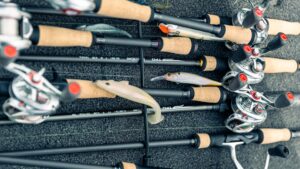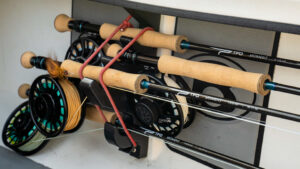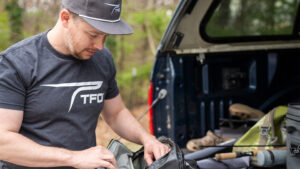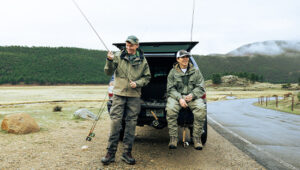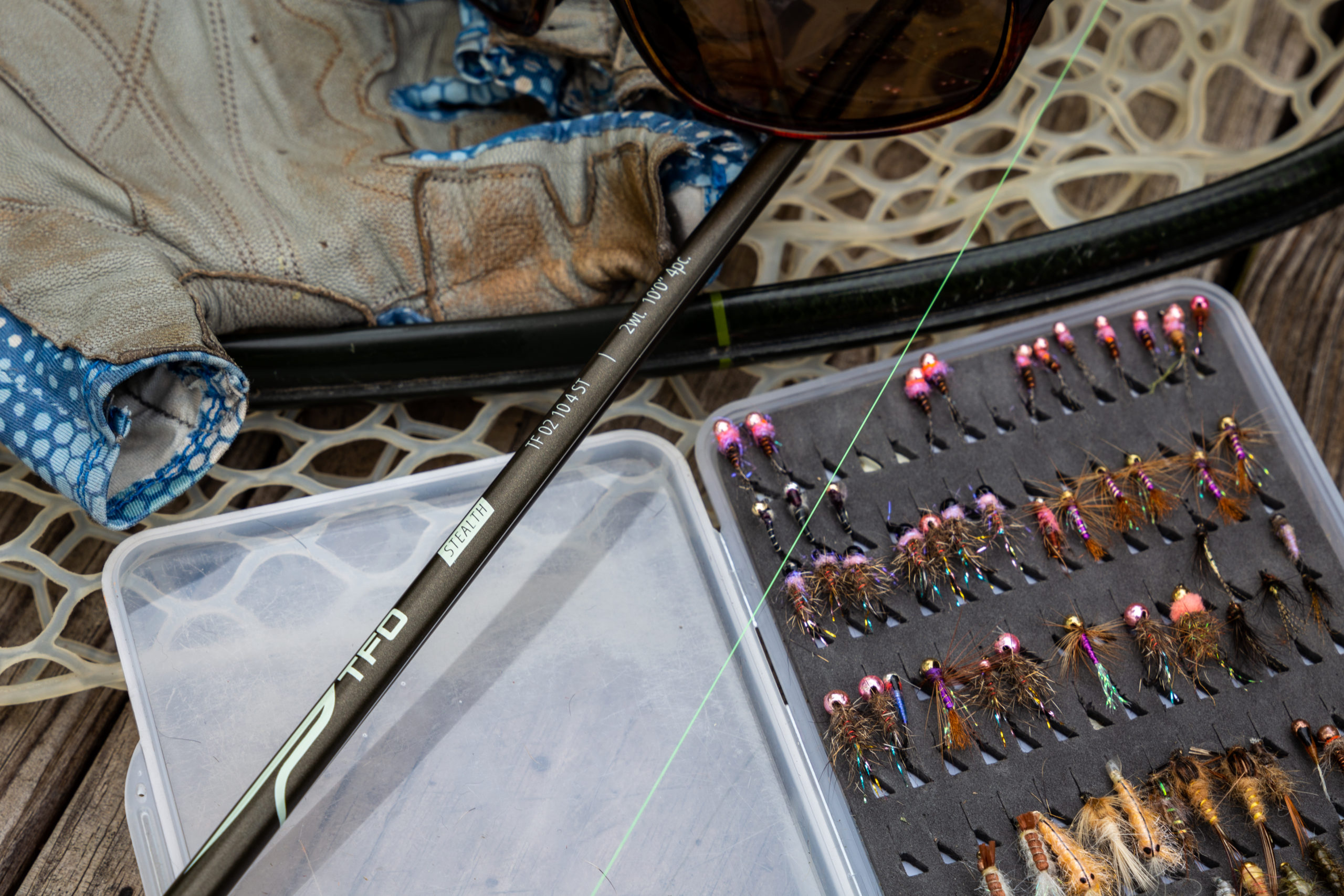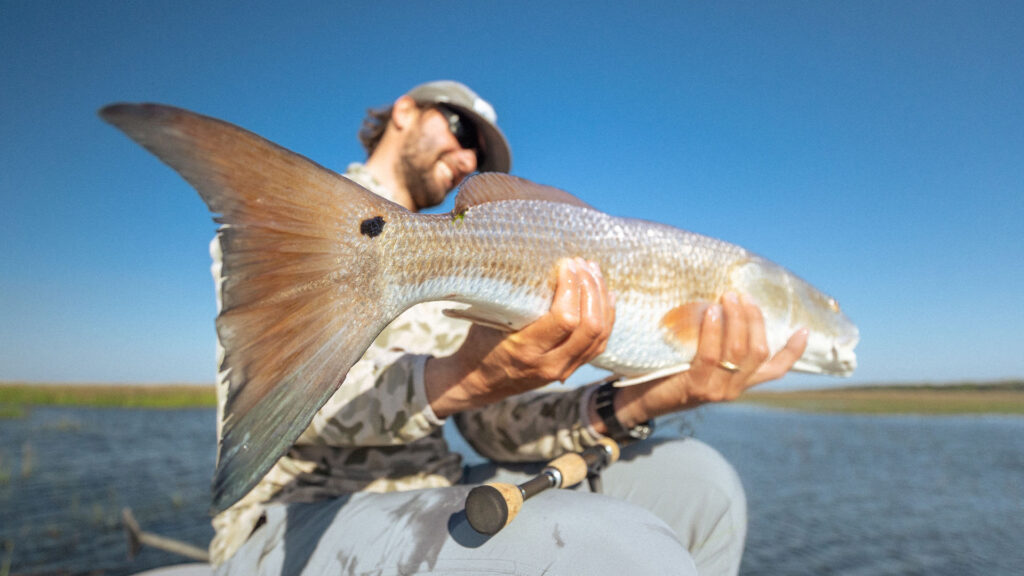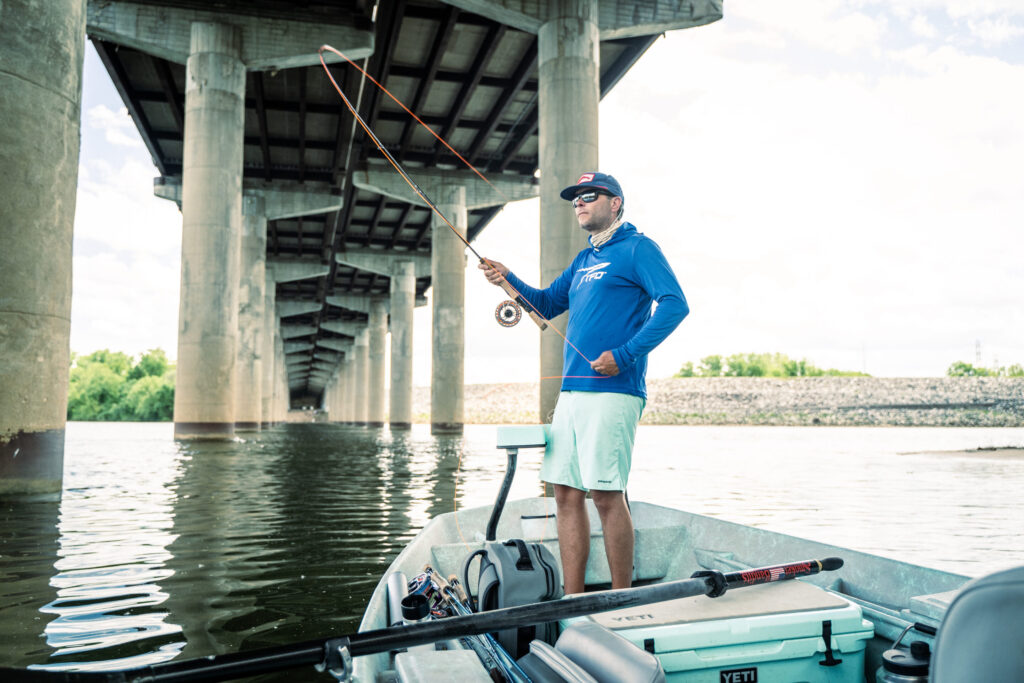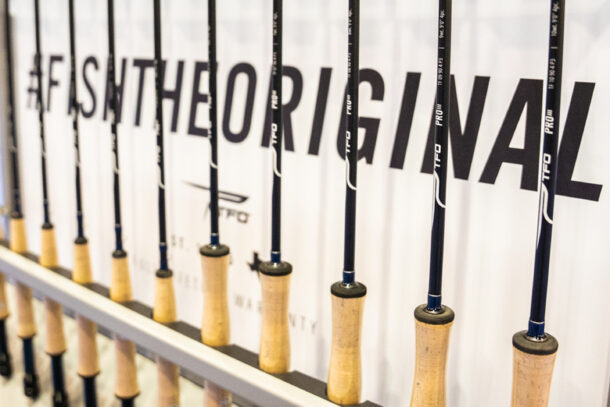No facet of fly fishing has witnessed a more rapid rate of change than nymph fishing. Driven by its popularity which is fueled by its success, nymph fishing has arrived at the forefront of fly fishing. More anglers are nymphing than ever before. And it’s no wonder; trout feed more often on subsurface food sources than those floating on top and anglers rely more on nymph fishing to target those feeding fish.
Euronymphing, sometimes called tightline or contact nymphing has exploded onto the fly fishing scene and changed the landscape of nymphing. No other method brings more fish to the net because it allows anglers to more effectively meet the three goals of nymph fishing with every drift.
The three goals of nymph fishing: the ‘Why’
Regardless of the method, the three goals of nymph fishing still apply: the first goal challenges you to get your flies to the strike zone where trout feed, usually the bottom 20% of the water column. Trout hold in feeding lies close to the bottom where the current is less than that flowing over their heads. To reach those trout in the strike zone, our leader must pass through the faster layers, which produces drag that lifts our flies from the bottom and traps them in midcurrent.
Presentation, the second goal of nymph fishing, requires us to achieve a dead drift for our nymphs just like we do for our dry flies. Flies should tumble in the strike zone at the slower speed of that layer, not whisk over their heads in midcurrent. Natural invertebrates drift this way and so should our flies. In other words, our flies should not drift at the speed of the current we see on the surface, but at a speed approximately one half of the surface current.
Lacking a floatation style indicator, whose large surface area affixes our drift to the surface speed, euronymphing allows our leader to cut through the fast current to reach the strike zone. Producing less drag on our flies, euronymphing allows our flies to remain in the strike zone and lets them drift at the slower speed of that layer, achieving goals number one and two.
A more accurate means of strike detection obviously leads to more fish in the net, making it goal number three for any successful nymphing method. While there’s a time and place for floatation devices, euronymphing affords a more sensitive and reliable means of strike detection by eliminating the inherent delay in strike detection with floatation devices, including plastic indicators. With the improved connectivity to our flies that euronymphing provides, strike detection sensitivity and immediacy also improves.

This graphic further illustrates the importance of a drag free drift. Notice how the current is faster near the top of the water column underneath the bobber/indicator, thus creating more drag . Not having an indicator lets the nymph rig reach the bottom of the water column faster.
The ‘How’ of Euronymphing
Euronymphing minimizes the drag inducing effect of the surface and midcurrent portion of the water column by cutting through these layers as efficiently as possible to reach the strike zone, allowing our flies to maximize the time spent there. To accomplish this, first and foremost eliminate drag accentuating plastic floating strike indicators. Then eliminate any line or leader lying on the water’s surface as this will also accelerate your drift. Lastly, use the thinnest leader you can manage with all subsurface sections of your leader or tippet thin and level.
On the water, cast your flies upstream or at an upstream angle, usually less than forty-five degrees across stream. Most casts are less than twenty-five to thirty feet. A slightly overpowered forward cast combined with a hard stop will transfer enough energy to complete the cast and snap back the weighted flies enough to ‘tuck’ them under, drilling them into the water to improve their sink rate. Recover any slack in the leader as quickly as possible to connect to your flies since many strikes occur during the descent. You’ll know when your flies reach the strike zone because the leader will tighten slightly and the drift will slow noticeably to a speed more consistent with that layer.
By lifting the rod after the cast and holding steady throughout the drift, then by recovering slack with your line hand, keep all line and leader from the water’s surface, maintaining the most vertical orientation of the leader as it pierces the water. Keep the sighter out of the water not only so you can see it but also to reduce drag since its usually thicker than the fluorocarbon tippet below it. Allow the drift to approach and pass downstream of your position. At this point, you’re fishing under the rod tip. At the end of the drift, you can recast to start another pass.
Anglers can vary any of the three parts of a euronymphing presentation, which are the initial cast, the dead drift portion of the presentation that follows and thirdly, the aftermath of the dead drift.
Casting, the first phase of every drift, offers several choices. While a constant tension oval shaped tuck cast works most of the time, the choice of various other casts may be necessitated by circumstances, such as overhead vegetation. In this situation, a water loaded cast might work better. Another common problem; you encounter faster water that minimizes fly time in the strike zone or prevents them from even getting to the bottom at all. Try more power and a firmer stop on the forward cast to drill the flies to the bottom.
The dead drift phase, the middle part of every euronymphing presentation, often works best as a dead drift. But when trout hesitate or on slow days, try adding a very subtle jig animation to the flies to elicit a strike. Gently lift the rod and drop it slowly, staying in contact with the flies as much as possible. Use nymphs tied on jig hooks to reduce bottom snags. Sometime a simple jig ‘twitch’ means the difference of several fish on slow days.
The final stage of each pass begins as the dead drift ends. Often we simply recast to start another drift, but try stopping the rod tip to allow the flies to lift up towards the waters surface in the manner Jim Leisenring made famous many years ago as a method to imitate natural insect behavior releasing from the streambed and rising towards the surface. You’ll even get strikes by letting the flies dangle in the current. Also on occasion, let the flies swing across current at the end of the drift like wet flies, since trout like to chase living food prey. You can tease a lot of trout to bite that you might otherwise miss.
Armed with the ‘Whys’ and ‘Hows’ of euronymphing, you’re ready to hit the water. Pack your nymph fly box, grab your net and your nymphing rod. If you don’t have a nymphing rod and love to euronymph, consider adding one to arsenal. The ability to cast lightly weighted flies, rod length and sensitivity make a dedicated euronymphing rod a wise investment.
TFO recently released the new Stealth rod – designed specifically for European, high-stick and tight-line nymphing techniques. Learn more about the Stealth below or here.
Blog written by TFO Advisor Jason Randall. Photos provided Jo Randall.
![]()
